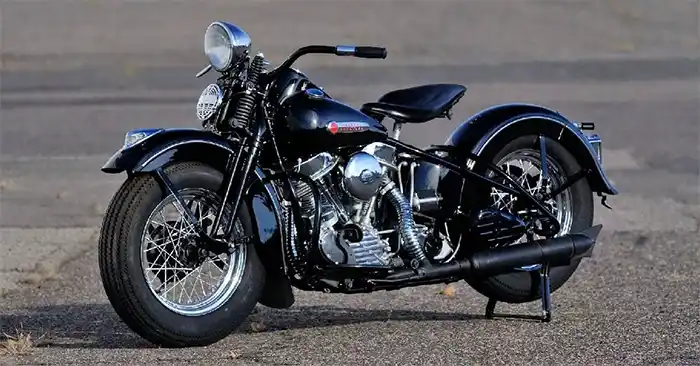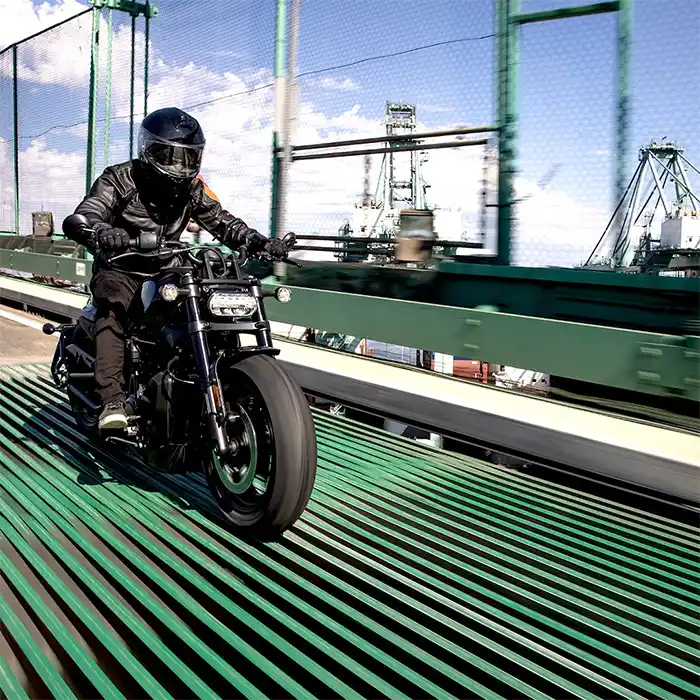Harley-Davidson has produced some of the finest engines in history. Every overhaul brought some major changes to refine the performance. Panhead and Shovelhead engines are two of them. The Panhead engine came to light in 1948, and the Shovelhead engine was launched in 1965.
So, what are the differences between Panhead vs. Shovelhead? The main difference between Panhead and Shovelhead engines is the shape of the rocker covers. The Panhead engine has a rocker cover looking like an inverted pan. And the Shovelhead engine has a rocker cover looking like a classic coal shovel.
We will go over the key differences between these two engines in this guide in detail. Let’s get started.
Panhead vs. Shovelhead: Quick Comparison
Here is a comparison chart to point out the key features of these two engines. Take a look.
| Features | Panhead | Shovelhead |
|---|---|---|
| Production Timeline | 1948-1964 | 1965-1984 |
| Engine Size | 61-74 cubic inches | 74-82 cubic inches |
| Engine Displacement | 1000-1200 cc | 1200-1340 cc |
| Engine Type | V-twin | V-twin |
| Cooling System | Air-cooled | Air-cooled |
| Number of Cylinders | 2 | 2 |
| Number of Valves | 4 | 4 |
| Power | 50-55 HP | 60-66HP |
| Carburetor | Linkert | Bendix-Keihin |
| Oil Feed Housing | Inside the Crankcase | Outside the Crankcase |
| Starting Mechanism | Kick starter | Electric starter |
| Rocker Cover Shape | Inverted baking pan | Inverted coal shovel |
| Torque | 62 lb-ft @ 3,200 rpm | 70 lb-ft @ 4,000 rpm |
| Fuel Efficiency | 43-47 mpg | 38-44 mpg |
| Special Features | Fewer oil leaks and quieter | More powerful and less, expensive |
Panhead vs. Shovelhead: Detailed Comparison
As you can already see, these engines share the same V-twin configuration. But still, there were some notable differences. Here is a detailed overview of their differences.
Production Timeline
Panhead Engine
After starting in 1903, Harley Davidson has continued to upgrade their engines from time to time. The Panhead engine first came out in 1948, which replaced its predecessor, the Knucklehead engine. That engine was known for oil leaks. To solve the problem, Harley introduced the new Panhed engine and changed the location of the external oil feeds.
As a result, the Panhead engine quickly became popular among motorcyclists and enthusiasts. The success of the Panhead engine continued till 1964.
Shovelhead Engine
In 1965, Harley brought the Shovelhead engine and replaced the Panhead with it.
This engine was larger than its predecessor and became a quick hit. The engine was used in different models until 1984, and then Harley dropped the production of the engine.

Appearance
As we have said earlier, the biggest difference between these engines is in their appearance. Harley enthusiasts can easily identify the engines from their appearance, but it is a bit difficult for newbies.
Panhead Engine
In a Panhead engine, you will see an inverted baking pan as the rocker cover. This design was used to accommodate the oil feeds inside the crankcase. The pan-like cover kept the top end of the engine covered.
Shovelhead Engine
But the Shovelhead engine had an overturned shovel as the rocker cover. Though the top end was slightly covered with the shovel-like cover, it wasn’t as much as the Panhead.
Engine Type and Size
Though the engine capacity was different, both engines used the same configuration. Panhead and Shovelhead engines were called V-Twin engines due to the placement of the cylinders. Both engines had two cylinders placed at an angle to resemble the letter ‘V.’ And there were a total of four valves in these engines. And that is the end of similarities.
Before the Panhead, Harley engines used to have cast iron cylinder heads. These cylinder heads were pretty heavy, and the heat dissipation rate was very low. Harley used aluminum alloy cylinder heads in the Panhead engine. So, it was lighter than its predecessors, and the heat dissipation rate was higher. The cylinder heads in the Shovelhead engines were also made of aluminum alloy.
The displacement is one of the biggest differences between these engines. Panhead engines had a lower displacement than Shovelhead Engines. And Harley introduced the Panhead engine in two variations for different series. Check the list below.
- Displacement of Panhead E Series – 61 cubic inches
- Displacement of Panhead EL Series – 61 cubic inches
- Displacement of Panhead F Series – 74 cubic inches
- Displacement of Panhead FL Series – 74 cubic inches
Though the Shovelhead started with a displacement of 74 cubic inches, Harley enlarged the engine in 1978. The new displacement was 82 cubic inches to make the engine slightly more powerful and suitable for larger motorcycles.
Engine Power And Torque
It is assumable from the above discussion that the Shovelhead engine was more powerful than the Panhead. In fact, the Shovelhead engine had about 10% more power than its predecessor.
As the E and EL series of the Panhead engine were smaller, they produced a maximum power of 50 HP. In the F and FL series, the power was slightly higher at 55 HP. And the maximum torque was 62 lb-ft at 3,200 rpm.
When the Shovelhead started, it delivered a maximum power of 66 HP. But the power was reduced to 62 HP in 1970 and further to 60 HP in 1978.
This had a negative impact on the popularity of the engine. So, Harley decided to increase the power to 65 HP in 1981. Its maximum torque was 70 lb-ft at 4,000 rpm. And the engine had this capacity until it was replaced by the next-generation engine.
Oil Feed Housing
Panhead Engine
As the previous generation of engines had an oil leak problem, Harley tried to solve the problem by changing the oil feed housing. They moved it inside the crankcase in the Panhead engine. Though this reduced the problem, oil leaks were still there.
Shovelhead Engine
In Shovelhead engines, the oil feed was shifted outside the crankcase. And it continued to give a better performance than the previous generation of Panhead engines.

Starter System
Panhead engines had kick-starters that required more strength to turn the engine on. Using electric starters on the Shovelhead engines was a major upgrade. Harley let the kick starter go to improve the riding comfort and engine performance.
Fuel Efficiency
As the Panhead engine was slightly less powerful, it had a better fuel efficiency. The average fuel efficiency of this engine was 43-47 mpg, considering city and highway rides. But the Shovelhead consumed more fuel as it delivered more power than the Panhead engine. It had a fuel efficiency of 38-44 mpg.
FAQs
Check the answer to some frequently asked questions about Panhead vs. Shovelhead.
Q: CAN SHOVELHEAD ENGINES BE INSTALLED IN A PANHEAD FRAME?
A: Yes. The triangular mount in a Panhead engine was suitable for installing the Shovelhead engine. But a Panhead engine couldn’t be installed in a Shovelhead frame.
Q: WHICH MOTORCYCLES USED PANHEAD AND SHOVELHEAD ENGINES?
A: These engines were used in a variety of models, including the Softail, Sportster, and Touring motorcycles.
Q: WHICH ENGINE HAD A HIGHER TOP SPEED?
A: Though there is no concrete record of the top speed, the Panhead had a top speed of about 100 mph. The top speed of the Shovelhead was slightly higher than that at 105 mph.
Conclusion
Despite being from two different generations, Panhead and Shovelhead engines are often compared with each other. Both engines were very reliable at their time, and we tried to show you the main differences between the Panhead vs. Shovelhead.
The biggest difference was in the shape of the rocker cover. Other than that, the displacement, power, starting mechanism, and oil feed location of these engines were different.